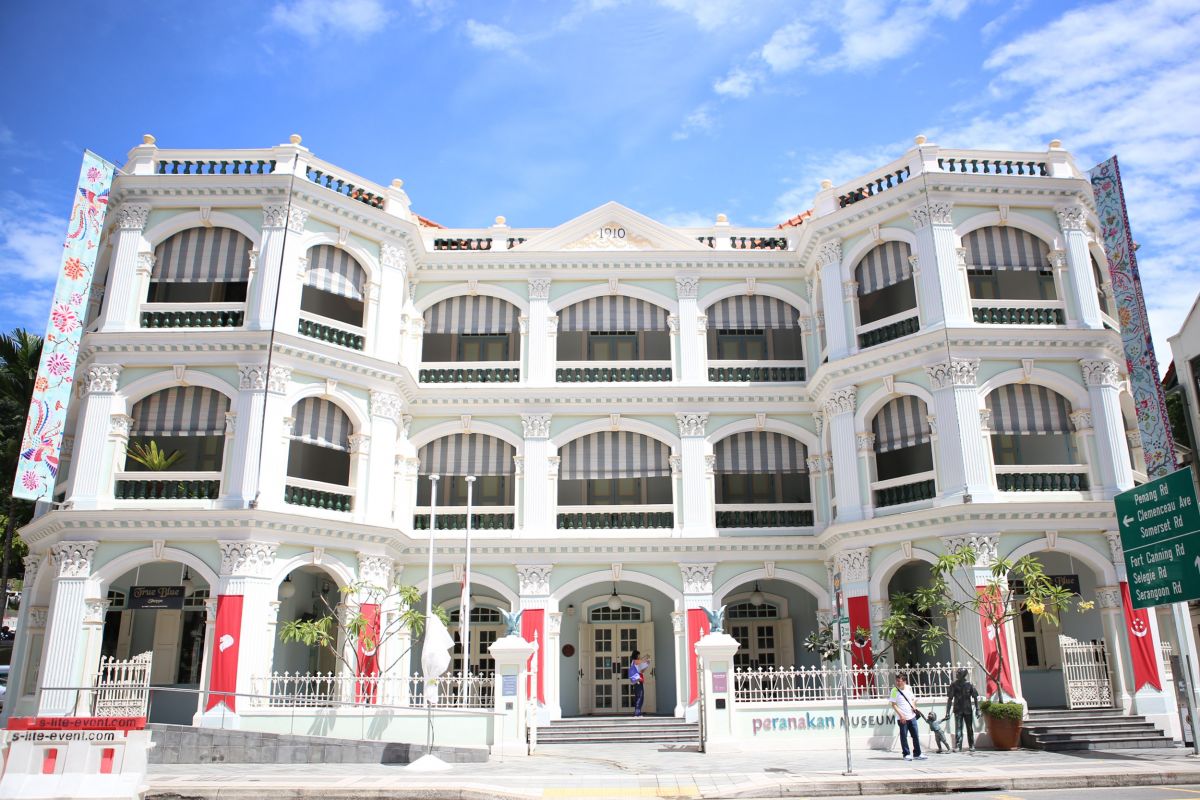Peranakan Museum
Museum of Peranakan culture, antiques, textiles, and artifacts.
Museum of Peranakan culture, antiques, textiles, and artifacts.




























39 Armenian St, Singapore 179941 Get directions

"Preparations for the inaugural exhibition of the Asian Civilisations Museum began in 1994. Storylines and themes were discussed, designers and construction companies appointed, artifacts selected and labels written. Appropriately, for a building that was once converted from a Chinese school, the permanent exhibition of the Museum began with a focus on different aspects of Chinese culture and civilisation, ranging from architecture to the connoisseurship of the literati. Later, the permanent exhibition at ACM, Armenian Street focused on showcasing the rich material and cultural heritage of the Peranakans. The ACM closed at the end of 2005 to be redeveloped as a new museum to showcase the eclectic Peranakan culture. Today, the old Tao Nan School has entered the latest and most colourful phase in its history – as the Peranakan Museum. Over the 70-year occupation of the place, several changes were made to the building. Space was differently employed and some structures were added while others demolished. The biggest transformation is the conversion from a school to a museum." - Fable

"The Peranakan Museum houses an excellent collection of antiques, textiles, and artifacts over three floors in a beautiful heritage building that in and of itself is something to behold—it was constructed in 1912 as the Tao Nan School inan excitingmash-up of architectural styles. The exhibition space showcases treasures from Peranakan homes and daily life in 10 permanent galleries. Peranakan culture, which sprang up in Singapore and elsewhere in the former Straits Settlements when Chinese traders married into wealthy Malay families, gave rise to a unique cuisine, type of dress, and home decor that are still an important part of many Singapore families’ traditions today."


"The Peranakan Museum houses an excellent collection of antiques, textiles, and artifacts over three floors in a beautiful heritage building that in and of itself is something to behold—it was constructed in 1912 as the Tao Nan School inan excitingmash-up of architectural styles. The exhibition space showcases treasures from Peranakan homes and daily life in 10 permanent galleries. Peranakan culture, which sprang up in Singapore and elsewhere in the former Straits Settlements when Chinese traders married into wealthy Malay families, gave rise to a unique cuisine, type of dress, and home decor that are still an important part of many Singapore families’ traditions today."


"Peranakan Museum, Bras Basah Bugis by Fable. "Preparations for the inaugural exhibition of the Asian Civilisations Museum began in 1994. Storylines and themes were discussed, designers and construction companies appointed, artifacts selected and labels written.Appropriately, for a building that was once converted from a Chinese school, the permanent exhibition of the Museum began with a focus on different aspects of Chinese culture and civilisation, ranging from architecture to the connoisseurship of the literati. Later, the permanent exhibition at ACM, Armenian Street focused on showcasing the rich material and cultural heritage of the Peranakans. The ACM closed at the end of 2005 to be redeveloped as a new museum to showcase the eclectic Peranakan culture.Today, the old Tao Nan School has entered the latest and most colourful phase in its history – as the Peranakan Museum.Over the 70-year occupation of the place, several changes were made to the building. Space was differently employed and some structures were added while others demolished. The biggest transformation is the conversion from a school to a museum."


"Inside a converted Chinese school built in 1912, this museum is devoted to Peranakan history, culture, and visual arts. The rehabbed colonial architecture is lovely to behold and the air-conditioning is a relief on a sticky-hot day (which is every day in Singapore). It really only feels crowded when the tour groups are coming through. The daily schedules are posted online, so time your visit accordingly if you wish to avoid them." - Ashlea Halpern